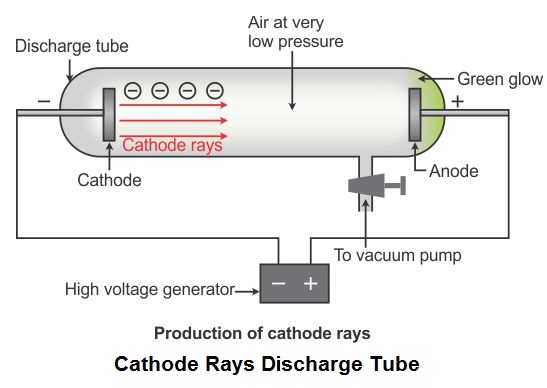

While atoms in the different element will have the different characteristic from one to another. Every single atoms in oxygen is same to another. Dalton believed that all atoms in the same element must have same weights.
#JJ THOMSON CATHODE RAY EXPERIMENT WITHOUT WORD FREE#
Tracker is a free video analysis and modeling tool available at ∼dbrown/tracker/. Pais, Inward Bound ( Oxford University Press, 1986), p.

The paddle wheel CRT is mentioned in the Australian NSW physics syllabus and students were tested on the notion that it proves that electrons carry momentum in question 11 of the 2005 Higher School certificate exam. Campbell, “ Textbook errors, 33, The paddle-wheel Crookes tube,” J. Thomson, Conduction of Electricity Through Gases ( Cambridge University Press, 1903), pp. Crookes, “ The Bakerian lecture: On the illumination of molecular pressure, and the trajectory of molecules,” Phil. This means that the rotation of the wheel is certainly not due to transferred momentum from the electron beam, and the results of the experiment should not be taught to students as proof that electrons are particles with mass that carry momentum. Our measurements yield a maximum impulsive force due to the electrons, which is within a factor of two of Thomson's estimate, and which is more than two orders of magnitude smaller than the force that is responsible for the observed acceleration of the paddle wheel. We could then compare the force, which really acts on the wheel to produce the observed motion to the maximum impulsive force that is supplied by the electrons. We then measured the actual acceleration of the wheel in the CRT by video analysis of its motion and determined the moment of inertia of the wheel along with its mass and dimensions. The misconception was not laid to rest, however, and despite an effort in 1961 to draw attention to Thomson's original work and so remove the error from textbooks, 3 the notion that a Crookes paddle wheel CRT demonstrates that electrons carry momentum continues to be taught in high school physics courses 4 and wheel. In 1903 Thomson discounted Crookes' interpretation by calculating that the rate of momentum transfer (which he estimated at no more than 2×10 −3 dyn, equivalent to 2×10 −8 N) would be far too small to account for the observed motion of the wheel, 2 instead attributing the motion to the radiometric effect. Crookes attributed the motion of the wheel to momentum transfer from the cathode rays (electrons) to the wheel, 1 and interpreted the experiment as providing evidence that cathode rays were particles. 1) when connected to a high-voltage induction coil. In 1879, in the midst of the debate between English and continental scientists about the nature of cathode rays, William Crookes conducted an experiment in which a small mill or “paddle wheel” was pushed along tracks inside a cathode ray tube (CRT) (similar to that shown in Fig.


 0 kommentar(er)
0 kommentar(er)
